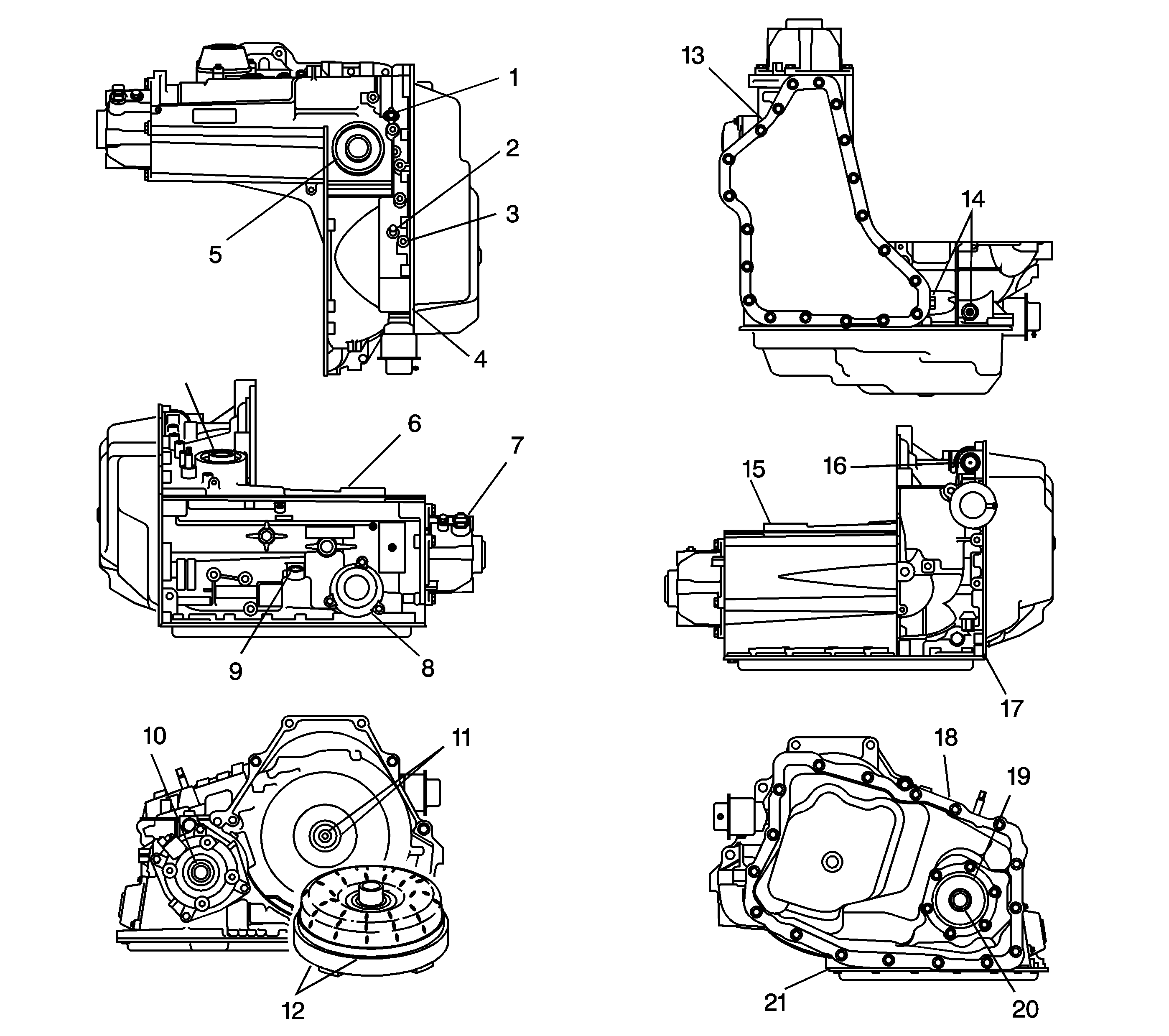Possible Points of Oil Leaks
- Oil may leak from the transmission pan or valve body cover for
the following reasons:
| • | The attaching bolts are not torqued correctly. |
| • | The gasket is damaged or improperly installed. |
| • | The oil pan or the mounting face of the valve body cover is not
flat. |
- Oil may leak from the case for the following reasons:
| • | Servo cover porosity or O-ring damage. |
| • | The multi-lip seal on the filler tube is damaged or missing. |
| • | The filler pipe bracket is mislocated. |
| • | The electrical connector O-ring is damaged. |
| • | The manual shaft seal is damaged. |
| • | The oil cooler connector fittings are loose or damaged. |
| • | The vacuum modulator O-ring is damaged. |
| • | The axle oil seals are worn or damaged. |
| • | The park lock out cup plug is loose. |
| • | The line pressure pickup pipe plug is loose. |
| • | The bottom pan or side cover gaskets are damaged. |
- Oil may leak from the converter end for the following reasons:
| • | The converter seal is damaged. |
| - | The seal lip is cut (check converter hub for damage). |
| - | The bushing has been moved forward and is damaged. |
| - | A garter spring is missing from the seal. |
| • | The converter is leaking from a weld area. |
| • | A casting is porous in the case or the drive sprocket support. |
| • | The oil seal on the turbine shaft is worn or damaged. |
- Fluid may come out from the vent pipe under the following conditions:
| • | If the fluid appears milky, water or coolant may be in the fluid. |
| • | The fluid level indicator registers incorrectly. |
| • | The drain back holes are plugged. |
| • | The case to the modulator gasket on the channel plate is mispositioned
or damaged. |
| • | The thermal element has been set to the incorrect height. |
Possible Leak Points


